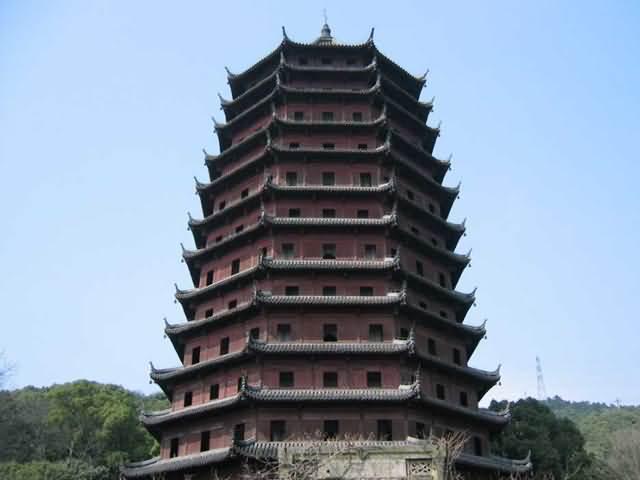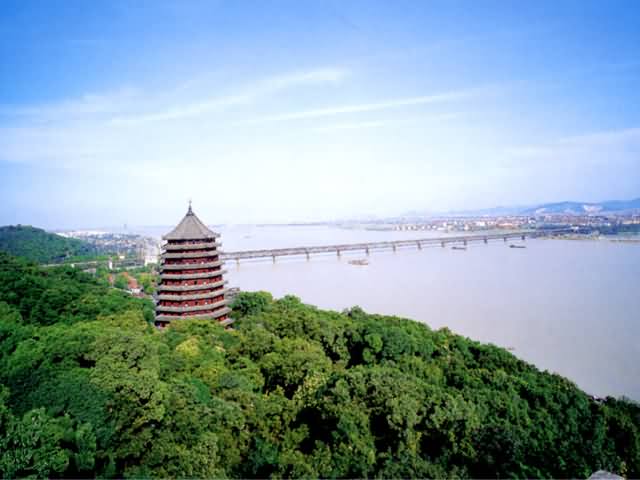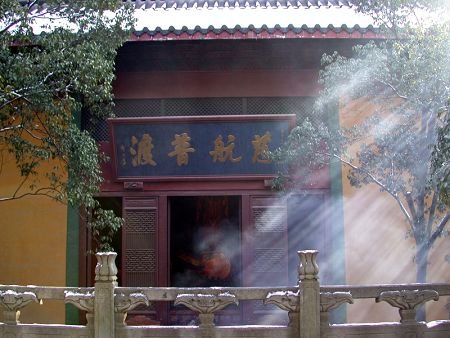Six Harmonies Pagoda

Located on the Yuelun Hill besides Qiantang River, Six Harmonies Pagoda was built by King of Wuyu to ward off Qiantang bore. As high as 59.89 meters, this grand pagoda has 7 sides and 8 stories. Looked down from the top, all Qiantang River beauty is birdviewed. Now near Six Harnonies Pagoda, a Garden of Chines Ancient Pagodas with more than 100 pagodas and towers in various dynasties has been constructed to display Chines pagida culture integratedly.
The Pagoda of Six Harmonies has for hundreds of years been praised by poets and men of letters. According to historic accounts, the pagoda was constructed first in 970 during the Northern Song Dynasty by Qian Hongchu, the king of Wuyue, who ruled the area of today's Jiangsu, Zhejiang and Fujian provinces. The purpose of building the pagoda was to suppress the tidewaters. Since there was a temple called Temple of Six Harmonies, the pagoda was named accordingly to signify the harmony of heaven, earth, and the four directions of east, west, south and north.
The pagoda was constructed on a grand scale at first. It had nine storeys and was some 150 meters high. During the night lanterns were lit on the pagoda so that ships and boats on the Qiantang River could use it as a navigation tower. The pagoda has suffered repeated damage over its more than a thousand years. In 1121 it was almost completely destroyed by war. Reconstruction started in 1153 and was completed in I163. The height of the pagoda was reduced after reconstruction because there were only seven storeys left of the original nine. Major repairs were made again in 1524 during the Ming Dynasty and in 1735 and 1900 during the Qing Dynasty, but  these repairs were to the outside eaves only. The brick body of the pagoda remained the same as in the Song Dynasty.
these repairs were to the outside eaves only. The brick body of the pagoda remained the same as in the Song Dynasty.
Today some Song Dynasty inscriptions can still be found inside the pagoda. The extant pagoda is octagonal, has thirteen levels on the exterior but seven levels on the interior, stands 59.89 meters high, and is one of the tallest pagodas in southern China. The body of the pagoda was built of brick, but the pent roofs were made of wood. Inside the pagoda winding staircases line the walls, leading to the top level. Each storey has a square room, its ceiling supported by brackets. The sunk panel on the ceiling was made by stacking bricks to form saw edges. The walls of the pagoda are carved with human figures, flowers, birds, fish, insects and other decorative patterns, all vividly done. The balconies with banisters around each storey are spacious and convenient for people to walk around and enjoy the beautiful landscape in the open.




